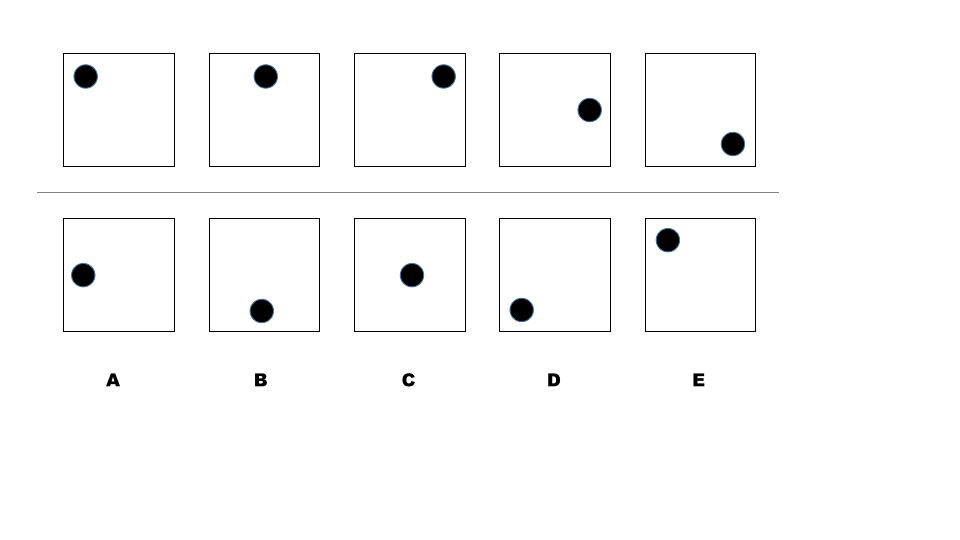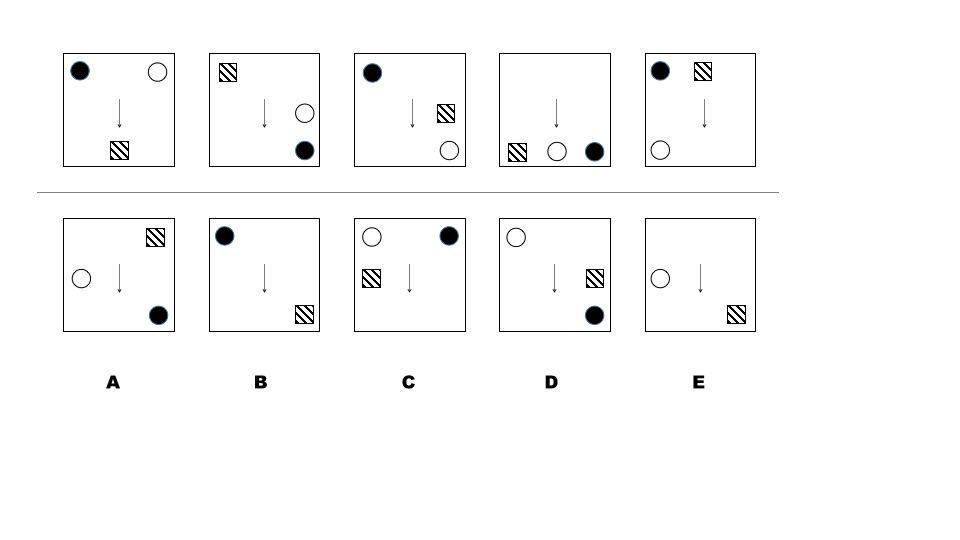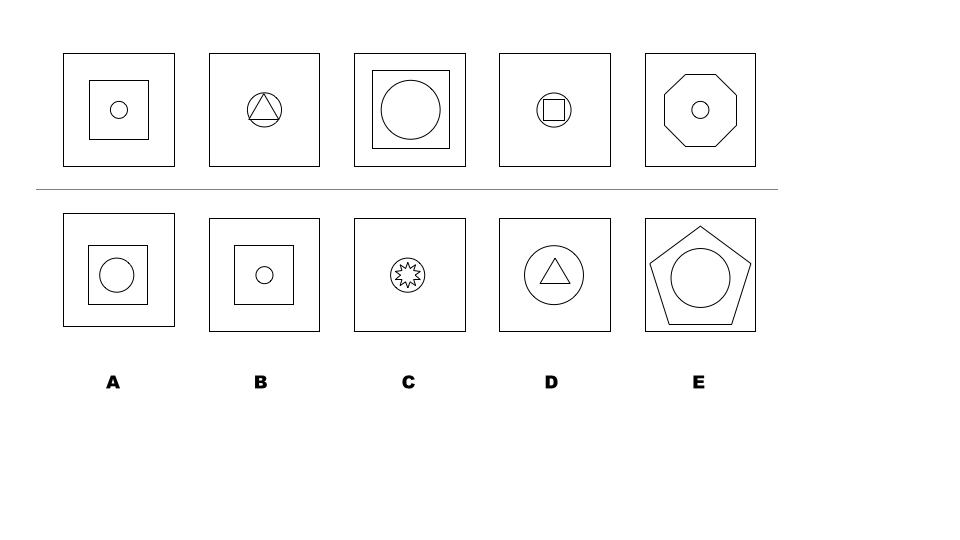What is an Inductive Reasoning Test?
Inductive reasoning tests are designed to examine a candidate’s abstract reasoning ability; their ability to see patterns and consistencies in data and to work flexibly with unfamiliar information.
One of the main benefits of inductive reasoning testsis that they are not dependent upon language, which makes them a good tool for assessing international candidates or candidates for whom English is not their first language. Moreover they are usually very good for predicting problem solving ability, which is imperative in many jobs.
Practice Inductive Reasoning Questions
Inductive reasoning questions typically involve a number of diagrams or pictures. The candidate must identify what the pattern, rule or association is between each item and then use this to select the next item in the sequence, or to identify the box missing from the sequence.
While inductive reasoning questions test your ability to think broadly and creatively about a set of data, there are some techniques that you can use to help you. We will explore these in the practice questions that follow below.
The answer in each case is just below the diagram, so don't scroll down too far!
Items that move around
There are many variants on this theme. On the most basic level, the elements move around within the box and you need to understand why they are moving in the order they are.
Question 1: Which box is next in the sequence?

In the example above, the black circle is moving around the box in a clockwise direction, each time moving half of the length of the box. This means that the next box in the sequence is B.
In many cases there will be multiple items that move around within the box and each will have its own sequence rule. This is shown in the question below.
Question 2: Which box is next in the sequence?

In this instance there are three rules. The black circle is moving backwards and forwards between the top-left corner and the bottom-left corner. The white circle is moving anti-clockwise around the box half a side at a time. The stripy square is moving clockwise around the box, moving one and a half sides each time. The arrow is irrelevant as it doesn’t change. The correct answer is therefore E.
This also illustrates a trick to watch out for – the black circle has become invisible because it is now behind the stripey square.
Relationships between particular items
There are several ways that elements can have relationships with one another, for example:
- Where they are in relation to each other
- Number of sides shapes have in relation to each other
- Numbers that incrementally increase or decrease
To solve these types of questions you need to identify what the rule that governs the relationship is. Some examples will be explored in the questions below.
Question 3: Which box is next in the sequence?

There are two patterns within this question. The number of sides on the large shape decreases by one each time, and the number of dots in the middle is equal to the number of the sides of the big shape minus one. The correct answer is therefore A.
In this sort of question remember to also look for relationships between odd and even numbers.
Question 4. Which box is next in the sequence?

This question has two rules. First, the central circle goes small, medium, large, medium, small. The second rule is that the other shape takes it in turns to be either inside or outside the circle. The next box in the sequence is therefore C because it has a medium-sized circle and a shape within it.
Be careful when looking at the sizes of shapes, as they can sometimes look distorted by the other shapes around them. In the example above, the circles with shapes inside give the impression of being smaller than they are. Optical illusions like this are sometimes used in inductive reasoning tests, so watch out for them.
Spatial rotation
Spatial rotation is the ability to mentally imagine an item from another perspective. Within inductive reasoning tests, spatial rotation often involves either imagining what a 3D image looks like from a different perspective, or what shape a flat shape might become when made 3D.
Question 5: Which box contains the same shape as the top series?

The correct answer is D. When the other options are spatially rotated, they are a mirror image of the target image.
Tips and best techniques for inductive reasoning tests
These four tips are well worth remembering before you take the inductive reasoning test for real:
- Bring and use a stopwatch.
- Learn the differences between test providers in terms of how they frame questions and how long the test will be.
- Work swiftly but carefully.
- Calculate the maximum amount of time to be allocated to a question and stick to it, using your stopwatch.
The tests are timed, and typically there is time pressure. Most online tests are designed to be completed within the time allocated.
Practice makes perfect
It can be really helpful to practise some inductive reasoning tests before you have to complete one under test conditions. This is because they are very different from the sorts of problems one tends to encounter in everyday life. Familiarity with the types of questions they include will help ensure that you don’t panic or freeze when you first see them.
Moreover, the more examples you work through, the more sorts of patterns you will encounter and the more of a ‘feel’ you will get for the materials. Make sure that you memorise the patterns discussed above but don’t let them blind you to creative alternative solutions.
Sometimes there may be questions where however much you look at them, you can’t see the pattern. Once you have given the question a good try move on. Don’t waste your time wrestling with one question at the expense of your overall performance.
Even though the terms inductive reasoning, diagrammatic reasoning and abstract reasoning are sometimes used interchangeably by employers when referring to aptitude tests, you need to be clear about which type of questions you can expect. You can then practice the questions to make sure that you are comfortable with each type. This will allow you to spend your time answering the question rather than trying to work out how to answer it.
0 comments:
Post a Comment